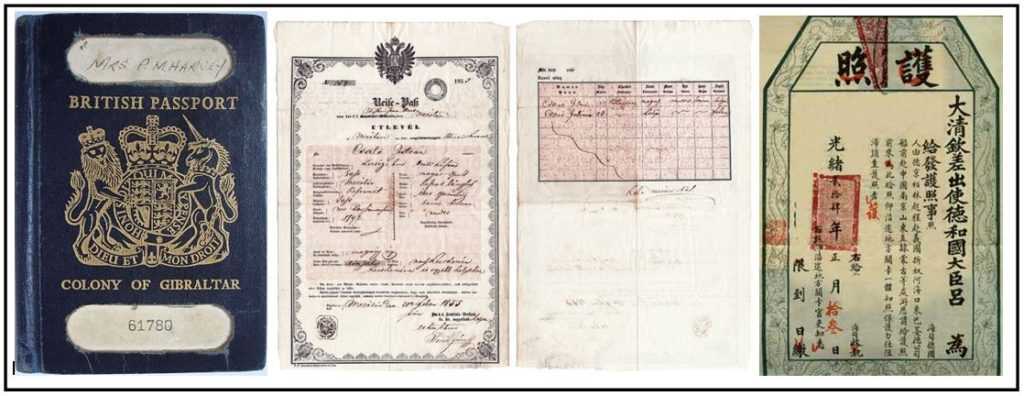A passport is a document that serves as proof of identity and nationality for international travel. It is an essential travel companion that allows travelers to cross borders and explore new destinations. The history of passports is fascinating and spans thousands of years, dating back to ancient times when they were used to control and monitor the movement of people. Over the centuries, passports have evolved and taken on new roles, from tools for trade and diplomacy to instruments of national security. In this blog, we will explore the history of passports, their purposes, and how they have evolved to become the vital travel documents we know today.
The History of Passports: The origins of passports can be traced back to ancient civilizations, such as Persia, Greece, and Rome, where they were used to control and monitor the movement of people. Passports were issued to ensure that travelers were authorized to cross borders and were not spies or enemies. In medieval Europe, passports were used by kings and noblemen to travel safely across foreign territories.




The first modern passports were introduced in the 19th century, initially as documents issued by individual countries to their citizens traveling abroad.
The 19th century saw the emergence of the first modern passports, which were initially issued by individual countries to their citizens traveling abroad. Before this, passports were not standardized, and they were issued mainly to government officials, diplomats, and merchants to travel across borders.
The introduction of modern passports was driven by the need for better identification and security measures. In 1855, the United Kingdom became the first country to introduce a modern passport, which contained a photograph and detailed personal information about the holder. This type of passport quickly became popular in Europe and North America, and by the end of the 19th century, many countries had adopted similar passport standards.
The introduction of modern passports also coincided with the growth of international travel, particularly for tourism and business. As more people began to travel across borders, the need for standardized travel documents became increasingly important. The passport allowed for easy identification and verification of the traveler's identity, as well as ensuring that they were legally authorized to enter a foreign country.
In addition to facilitating international travel, modern passports also played a significant role in diplomacy and international relations. During the 19th century, passports became an essential tool for diplomats and government officials to travel safely across borders and engage in diplomatic activities. Passport requirements were often used as a bargaining chip in international negotiations, and the refusal of a passport could lead to strained relations between countries.
The introduction of modern passports marked a significant shift in how countries controlled and monitored the movement of people across borders. While the initial purpose of the passport was to facilitate international travel and improve security, its role has expanded over time to include preventing illegal immigration, detecting and preventing criminal activities, and protecting national security. As a result, the passport has become a fundamental part of international travel and an essential tool for governments to manage the movement of people across borders.
During the 20th century, the use of passports became more widespread as international travel became more accessible. In 1920, the League of Nations introduced the first standardized international passport, which included a photograph and information about the holder's identity and nationality. Following World War II, passports became important instruments of national security, as governments began using them to prevent unauthorized travel and monitor the movement of people across borders.
In recent years, passports have evolved to include advanced security features, such as biometric data and digital encryption, to prevent fraud and ensure the identity of travelers. Digital passports have become increasingly popular, with many countries using electronic systems to store and process passport information. Today, passports are recognized as essential travel documents and are required for international travel by most countries.
"The Passport: The History of Man's Most Travelled Document" is a book that explores the fascinating history of passports and their evolution over time. The book delves into the origins of passports, which can be traced back to ancient civilizations, and how they have been used throughout history to control and monitor the movement of people across borders.
The book also covers the development of modern passports in the 19th century and their widespread adoption as international travel became more accessible. It details the role of passports in diplomacy, trade, and national security and how they have been used as a tool for governments to manage the movement of people across borders.
Written by Martin Lloyd, the book is a comprehensive and informative read that sheds light on the history and significance of the passport. It provides insights into how passports have evolved to become the essential travel documents we know today, complete with advanced security features and biometric data.
The book is suitable for anyone interested in history, international travel, and the role of passports in shaping global relations. It is an engaging and thought-provoking read that highlights the significance of the passport and its impact on our world.
Conclusion: Passports have come a long way since their origins in ancient civilizations. From tools for control and monitoring to instruments of national security, passports have evolved to become vital travel documents that allow us to explore the world. The history of passports is a fascinating journey through time, reflecting the changes in society, trade, diplomacy, and security over the centuries. As we continue to adapt to new technologies and challenges, the role of passports will undoubtedly continue to evolve, but their importance in facilitating international travel and promoting global understanding will remain unchanged.
Discover More
Most Viewed
Christmas is a season of joy, love, and traditions. And what better way to get into the holiday spirit than through timeless carols? These musical gems have been bringing people together for generations. Here’s our ranked list of the Top 10 Christmas Caro…
Read More

















